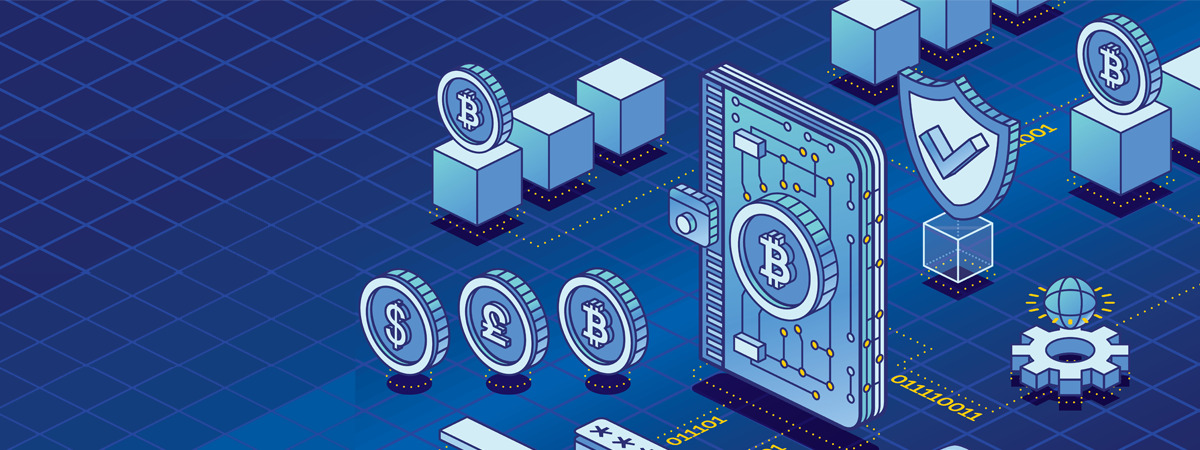What Is Blockchain Development?
Webapper talks about SaaS and cloud computing often, while we also keep an eye on new technologies and trends that impact our software community. No doubt you’ve read about cryptocurrency, which is built on blockchain, but perhaps you aren’t familiar with Web3 and blockchain development. Since it’s potentially a game-changing arena, we wanted to share our take on these emerging development concepts.
Blockchain Defined
In case it’s unfamiliar, blockchains are software that enable secure, transparent recording of data and transactions. Bitcoin and Ethereum are the most recognized blockchain projects. Blockchain uses decentralized digital ledger technology to record transactions across a network, without relying on a central authority. Blockchain technology can be used in gaming, healthcare, voting, and other non-financial industries.
Web3 Explained
Ask a hundred blockchain developers what Web3 is and you may get as many different answers. Although the concept of Web3 is a few years in the making, Web 3.0 (AKA Web3) gives users more control over their data and digital interactions. Web3 envisions a more transparent, inclusive, and censorship-resistant internet that empowers individuals and enables innovative decentralized applications. Web3 builds on the principles of blockchain technology and cryptocurrencies to create a more open, secure, and user-centric web. It is expected to revolutionize many industries, including finance, supply chain management, healthcare, and social media. Web3 cornerstones include:
- Trustless: you don’t have to trust strangers or third parties for the network to work. The network allows you to interact publicly or privately with no need for a trusted third party.
- Permissionless: you don’t need anyone’s permission to join the network. The price of admission is an internet connection.
- Decentralized: control and decision-making transfers from a central entity to a distributed network. It enables more services with higher quality.
- Payments: Decentralized Apps (dApps) need cryptocurrency to manage transactions. Users from anywhere can use an app without worrying about how to pay (it’s built in).
Blockchain Development
Blockchain development refers to the process of designing, building, and implementing blockchain-based solutions and applications. It involves working with the underlying technology, protocols, and tools to create decentralized systems that utilize blockchain’s unique features. The Web3 ecosystem is evolving rapidly, with many new applications and platforms being developed. Examples of Web3 blockchain projects include:
Non-Fungible Tokens (NFTs)
NFT marketplaces, built on Web3 principles, enable digital ownership — artists, creators, and collectors can buy, sell, and trade digital assets (NFTs)like art, music, and other collectibles. NFTs are a rapidly evolving space, and new types will undoubtedly emerge.
Decentralized Finance (DeFi)
DeFi platforms use blockchain technology to create open, transparent financial systems. Without needing intermediaries like banks, DeFi applications enable users to lend, borrow, and invest in cryptocurrencies and digital assets.
Decentralized Social Media
Decentralizing social media can resolve user control, privacy, and content ownership challenges. Blockchain can provide censorship-resistant, decentralized social networks.
dApps Explained
dApps — decentralized applications — run on a decentralized network. Unlike traditional applications that are centrally controlled by a single organization, dApps are open-source, transparent, and operate without a central authority. dApps have the potential to disrupt industries that rely heavily on intermediaries. Since they’re often built using open-source, it drives collaboration and innovation. Developers from around the world can contribute to functionality, improve security, and propose new features. Noteworthy example dApps include:
- Uniswap: A decentralized exchange (DEX) that allows users to trade cryptocurrencies from their wallets, without the need for an intermediary.
- MakerDAO: A decentralized autonomous organization (DAO) that issues and manages the stablecoin Dai, which is backed by collateral locked in smart contracts.
- CryptoKitties: CryptoKitties is a game where users trade unique virtual cats. Each CryptoKitty is represented by a non-fungible token (NFT) on the Ethereum blockchain.
- Filecoin: A decentralized storage network, Filecoin provides an alternative to centralized cloud storage. Users rent out unused storage space to earn cryptocurrency rewards.
What Is Blockchain Development?
Blockchain development is driven by the goal of creating decentralized, trustless, and tamper-proof solutions. It requires expertise in blockchain, cryptography, programming, and a strong understanding of the application requirements. It entails implementation of decentralized protocols, smart contracts, and technologies. The end result (hopefully) is building secure, transparent, reliable dApps!


Leave A Comment